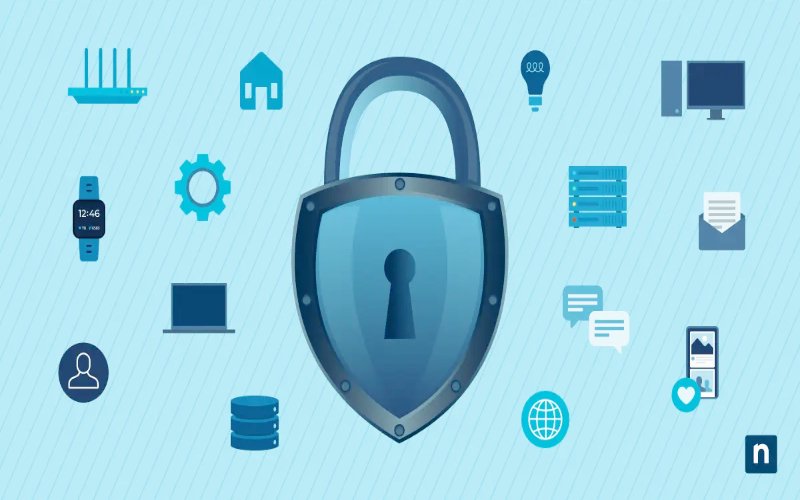Introduction to Cybersecurity in IoT Devices
The Internet of Things (IoT) has transformed our daily lives, making it more convenient and efficient. However, this interconnected world also introduces significant cybersecurity risks. With countless devices communicating and sharing data, ensuring robust security is critical. This blog post delves into the strategies for enhancing cybersecurity in IoT devices, highlighting common challenges and effective solutions. Buckle up as we navigate through the essential aspects of securing our smart devices.
The Growing Importance of Cybersecurity in IoT Devices
The Necessity of Secure IoT Environments
As the number of IoT devices increases, so do the opportunities for cyber threats.Every connected device—from industrial sensors to smart thermostats—represents a possible point of entry for hackers.Effective cybersecurity in IoT devices is essential to protect sensitive data and ensure the reliability of critical systems. Without proper security measures, the consequences of breaches can range from data theft to severe disruptions in daily operations.
Consequences of Weak Security in IoT Devices
Weak security in IoT devices can lead to severe repercussions. For instance, if a smart home security system is compromised, it could result in unauthorized access to personal property. Similarly, flaws in medical IoT devices could jeopardize patient safety. These scenarios underscore the necessity of implementing robust cybersecurity measures to safeguard both personal and organizational assets.
Common Challenges in Cybersecurity for IoT Devices
Device Diversity and Complexity
One major challenge in cybersecurity for IoT devices is the diversity and complexity of the devices themselves. IoT systems often consist of a wide range of devices with varying capabilities and functionalities. This variety makes it difficult to standardize security measures and ensures that all devices are adequately protected. Each device may have different vulnerabilities and require specific security solutions.
Limited Resources and Update Challenges
Memory and processing power limitations affect a lot of IoT devices.This limitation makes it challenging to implement resource-intensive security measures like sophisticated encryption algorithms or complex authentication protocols. Additionally, the process of updating software and firmware across diverse IoT devices can be cumbersome, leading to potential security gaps if updates are not applied promptly.
Strategies for Enhancing Cybersecurity in IoT Devices
Implementing Advanced Encryption Techniques
Importance of Encryption
Encryption is a cornerstone of cybersecurity in IoT devices. By encrypting data transmitted between devices, you protect it from unauthorized access even if intercepted. Advanced encryption techniques ensure that communication remains secure, thereby safeguarding sensitive information and preventing data breaches.
Types of Encryption
Different encryption methods suit different IoT devices. Symmetric encryption, using the same key for both encryption and decryption, is often used for devices with limited processing power due to its efficiency. Asymmetric encryption, involving public and private key pairs, provides stronger security but can be more demanding on resources. Choosing the right encryption method based on device capabilities is crucial for maintaining security without compromising performance.
Enhancing Authentication Mechanisms
Multi-Factor Authentication (MFA)
Multiple kinds of verification are required for Multi-Factor Authentication (MFA), which adds an additional layer of protection.For IoT devices, this might include a combination of passwords, biometric data, and one-time codes. MFA significantly reduces the risk of unauthorized access, providing enhanced protection against cyber threats.
Device Identity Management
Proper device identity management ensures each IoT device has a unique and verifiable identity. This can be achieved through digital certificates or hardware-based identifiers, preventing unauthorized devices from accessing the network. Effective management of device identities is essential for maintaining a secure IoT environment.
Monitoring and Incident Response
Continuous Monitoring
To identify security concerns and take immediate action in response, constant monitoring is essential.By employing advanced analytics tools, you can track network traffic, identify unusual activities, and detect potential breaches early. Real-time alerts enable quick action to mitigate risks and prevent significant damage.
Incident Response Planning
A well-defined incident response plan is crucial for addressing cybersecurity incidents. This plan should include procedures for detecting, containing, and recovering from breaches. Regular drills and updates to the plan ensure that your team is prepared to handle various scenarios, minimizing the impact of security incidents on your IoT infrastructure.
Educating Users and Stakeholders
User Awareness and Training
Educating users about IoT security best practices is essential for protecting devices and networks. Training programs should cover recognizing phishing attempts, managing passwords securely, and understanding the importance of regular updates. Well-informed users are more likely to adopt secure behaviors, contributing to the overall safety of IoT systems.
Engaging Stakeholders
Collaboration with stakeholders, including manufacturers, service providers, and regulatory bodies, is crucial for enhancing IoT security. Regular communication and joint efforts can help address emerging threats, share best practices, and develop industry-wide standards. Engaging stakeholders fosters a collaborative approach to building a secure IoT ecosystem.
Regulatory and Compliance Considerations
Industry Standards and Regulations
Compliance with industry standards and regulations is a key aspect of ensuring cybersecurity in IoT devices. Standards such as ISO/IEC 27001 and guidelines from organizations like NIST provide frameworks for implementing effective security measures. Adhering to these standards helps meet established security benchmarks and protects against known threats.
Data Privacy Laws
Data privacy laws, such as GDPR and CCPA, impose requirements on data handling practices. Respecting these laws is necessary to protect personal data and stay out of legal trouble.IoT devices must be developed with user data privacy and legal compliance in mind.mind, guaranteeing security and privacy.
Future Trends in IoT Security
Emerging Technologies
The future of cybersecurity in IoT devices will see the integration of emerging technologies like blockchain and artificial intelligence (AI). Blockchain can enhance data security through decentralized and tamper-proof records, while AI and machine learning can provide advanced threat detection and automated responses. Staying abreast of these technologies will be crucial for addressing future security challenges.
Evolving Threat Landscape
As IoT technology evolves, so do the threats associated with it. Cybercriminals are continuously developing new tactics to exploit vulnerabilities. Staying informed about the latest threats and adapting security strategies accordingly is essential for maintaining effective protection. Proactive measures and ongoing research into emerging threats will help safeguard IoT devices against future risks.
Conclusion
As the Internet of Things continues to expand, the importance of cybersecurity in IoT devices cannot be overstated. Addressing the challenges associated with securing interconnected devices requires a multifaceted approach. From implementing advanced encryption and enhancing authentication to continuous monitoring and stakeholder engagement, every aspect of IoT security plays a critical role in protecting our digital environment.
By adopting comprehensive security strategies, adhering to industry standards, and staying proactive about emerging threats, we can create a secure and resilient IoT ecosystem. The future of IoT security depends on our collective efforts to address existing vulnerabilities and anticipate new risks. Through a combination of advanced technologies, user education, and regulatory compliance, we can ensure that the benefits of IoT are enjoyed without compromising our safety and privacy.
Also visit on techitl.com.




